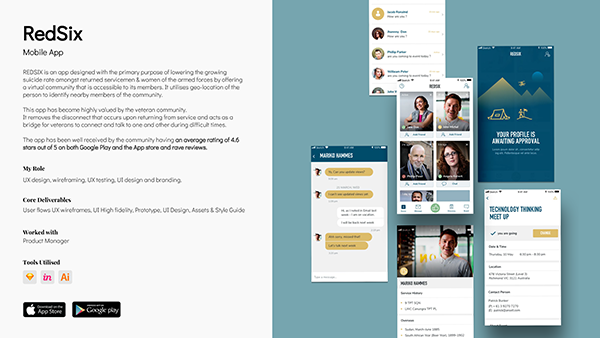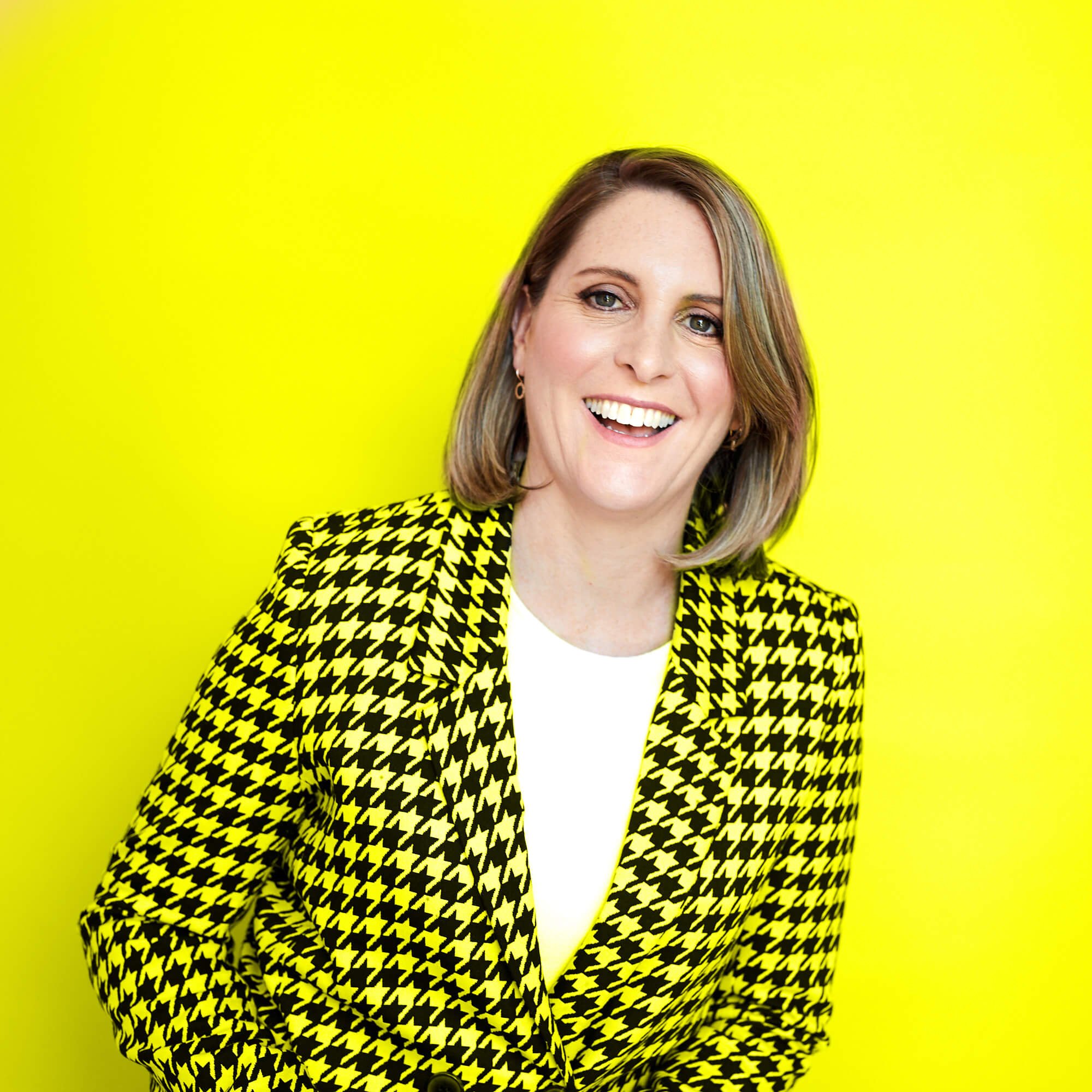Recently, I presented at a Women in UX Meetup, organised by UX Australia and UX Career Mentor Mags Hanley where I shared advice on how to showcase your work and capabilities through the creation of a UX case study..
I’d like to share this advice with you now, so let’s take a deep dive…
Who are you designing your case studies / portfolio for?
To start with, I want you to think about WHO you are designing your portfolio for? Is it for yourself or other designers, or are you taking a user-focused approach and thinking about viewers who are involved in potentially employing you?
Try and think about your profile (resume, portfolio, case studies, LinkedIn) from the viewpoint of these employers — be they hiring managers, recruiters, Human Resources (HR) or Talent Acquisition (TA). I’m going to delve into some insights as to what each of these viewers tend to look for further along in this post, but I want to plant this seed early.
Where to start?
I recommend starting with just one project — approach it as a Project Overview first, then expand it out to a case study.
Pick the project you’re most proud of and ideally also aligns best to the type of work you want to get, or the role you are applying for. Start with the basic overview, bullet point the key details that give context to the project and your work on it. Think of this as a process overview, rather than the project insights. The aim is for a viewer to understand the type of project and what you did in a 3 second scan. These project overviews are to gain interest, get you shortlisted or land an interview.
TIP > If you've come from a design background, avoid getting distracted with formatting by using a Word doc or email to layout content.
Key information needed on these project overviews are:
- Client / brand
- The project / problem you were trying to solve
- The team you were working with (ie. cross functional project team, could also be studio touch points & client's internal team)
- Your role
- Your personal deliverables / process
- Results / reflections
Your UX case study
The next step is to build out a more detailed case study. Expand the Project Overview to include particulars about your role and what you did (deliverables like workshops or user testing — what type, who, how many & why etc) and bring in some key visuals.
At this point you can park these as mid-sized case studies, or you can continue expanding out to full and detailed case studies that delve more into your process, the insights, findings, pivots etc.
Be sure to include any stats or data you have access to. I also recommend including a retro or reflections on the project. This is where you can list things like challenges you overcame, pivots, ‘aha’ moments, results, failures, learnings etc.
> Remember – WHO?
Keep in mind WHO is viewing your case studies and how they will be used. Unfortunately it's very rare for someone to spend 15 minutes reading through each of your case studies. At your job interview you’ll probably have 15 minutes total to present a couple of your case studies. Ensure the details are easy to navigate, with clear text hierarchy, and the content is focused on the key project elements you want to highlight — these will all help viewers to scan & review your work, and for you to present with ease.

Case study created by Parimal Chauhan
Your online portfolio
Although it's a great way to showcase your work to a larger audience, having an online portfolio isn’t always essential — many candidates I work with present a resume and a case study document. This can sometimes be quicker / easier to create and can allow you to showcase more of the project details as it's offline. It also allows you to pick which case studies align best for the role you are applying for or the work you want to focus upon. If you do have an online portfolio, you want to achieve the same result in terms of directing focus.
> Remember – WHO?
Jumping back to WHO is viewing here. You have about 5 clicks within your portfolio site to get the attention of a hiring manager, so you want to ensure these clicks are on the most relevant projects. Think about your website filter or tag functionality, or having very clearly defined headings. For example ‘commercial studio work / study-related projects / self initiated’ are key areas for a Junior or Mid-weight level candidate, or it could be the type of tech output or platform output like ‘native mobile / desktop app / touchscreen’ for a Product Designer.
Non-disclosure Agreement (NDA) work-around ideas
If your work is covered by a NDA (Non Disclosure agreement), please take the time to understand or ask about the parameters around this — not all NDA restrictions are the same. It's about understanding what the client is concerned about and working within these boundaries.
It may feel like an awkward conversation to have, and of course you need to consider at what point to have it, but it is totally reasonable to either raise it when onboarding and signing the actual NDA, or at project / product launch. I would frame it along the lines of “I’m really proud of the work we did / this product we’ve created and I would love to feature it in my folio down the track. I just want to ensure I’m on the same page with what I can / can’t include under the NDA.”
You can still showcase your experience when working under a NDA, though it may be a little vague. For example most Service Designers’ work will be covered by NDA, but when I’m viewing a Service Designer’s profile, I’m not looking to see the user insights from interviews you did, I’m looking to see the type of projects you worked on — be that organisational change, digital product / services outputs, or tech transformation focused work.
Some ideas on ways you CAN showcase NDA in your UX case study:
- Waiting until after release when the work is in market
- Creating offline pdf case studies (potentially password protected)
- Showcasing only in person at your job interview
- Creating a striped back case study that focuses on process and deliverables (eg. competitor analysis, but not actually showing the insights)
- For the tightest NDAs, when you can't even mention the client or brand (eg. NPD or innovation work), I recommend posing a question like. “how do you redefine the future vision for the shopping experience for one of Australia's largest retailers?”.
Know your audience
Understanding how your case studies are being viewed, and what different viewers are looking to see, can help focus your work and experience presented. Unfortunately there isn’t one answer to this — it depends on who the viewer is, your skill level and your focus area.
Some insights regarding what we're looking to see based on your skill level:
- For Mid-weight and Junior: Your commercial studio experience, project range and the skills you're starting to expand upon.
- For Senior practitioners: Your project range, niche skills, leadership experience (projects, people, your skill area), stakeholder engagement capabilities, ability to navigate complex organisations / ecosystems.
- For Leads: Leadership experience (people, projects, skill area) and if this is formal or informal (eg. direct reports or mentoring). We need to start seeing results and stats. Starting to expand out what you're leading or directing, and what you're still covering hands-on yourself.
- For Management: Profile tends to be about vision and leadership style, process or approach to problem solving. Focus on team building, growth, success, project type and size, ROI and results-driven insights — cost saving, uplift in users, customer retention, team expansion etc and the levels and parameters around your stakeholder engagement. It's important to highlight any hands on deliverables you still cover.
Some insights regarding WHO is viewing your profile and what they may want to see:
- Hiring Managers: Most are practitioners themselves and have a detailed understanding of this space. Usually reviewing for a specific role or project, but also team fit. Tend to focus on project deliverables, working style & team dynamic eg. what types of projects you've worked on, the way you work and engage with teams, how you flex into various skill areas on cross functional teams etc.
- Talent Acquisition / HR: Not always familiar with this space, so ensure you're very clear about aligning your profile, skills, experience and case study samples to the role you are applying for.
- Recruiters: Not always familiar with this space, (unless they are UX specialists like Aquent), level of understanding varies significantly (check out LinkedIn content / role overview to gain insights re. this). Either reviewing your profile for the diversity of projects or for very niche skills ie. Determining if you align for lots of different roles or clients, OR for a particular niche role.
What I'm looking to see
With so many variables in what viewers are looking to see, I thought it would be handy to run through some tangible elements that I’m looking for, as a UX, CX and Service Design Talent Specialist, when I review profiles. These are:
- Skill / focus area (via personal deliverables, job title, role on team)
- Project diversity (because I support on lots of roles / clients)
- Context of your experience (type of studio, client, role, projects, the cross functional team)
- Level / leadership (amount of commercial studio experience and what type, people / project leadership, advocating for HCD, stakeholder engagement, etc)
In terms of how this looks, it depends on your role.
For example for a UX Designer, I want to see a range of problems you’ve helped solve, the diversity of projects / platforms / products, and your role / deliverables within cross functional teams of varied skills.
For a UX / UI Designer or Product Designer with end-to-end skill set, I’m looking to see projects highlighting work at different ends of UX spectrum (ie. discovery / research; scoping / flows etc, user testing / and final UI Design / design systems etc. I’m also looking to see type of project you’ve working on — from the ground up with NPD / innovation, or work on existing products like feature / functionality uplift and optimisation, or bringing together multiple elements like legacy system integration. I’m also looking to see the types of products or platforms that you’ve worked on: native mobile apps (iOS & Android), Watch apps, desktop apps, dashboards, software interface, touchscreen, etc.

Case study created by Parimal Chauhan
Hopefully the above information has provided some ideas on how to best present your case studies. I welcome any feedback, and of course, I would LOVE to hear if the tips work in helping you land your next interview or role. If you’re interested in connecting, I share lots of content on LinkedIn relating to my focus area of UX, CX and Service Design. If you would like to hear about UX job opportunities in Sydney or Melbourne that may align, please feel free to drop me a line — I would love to assist if I can.
Latest.

AI adoption failing isn’t the tech, it’s the people. How smart businesses overcome this.
Technology, Thought Leadership, Industry Trends

Temp-to-perm is the best way to hire today.
Hiring Insights

How to keep top talent: Strategies for successful onboarding
Hiring Insights, Ask Aquent, Training Resources



